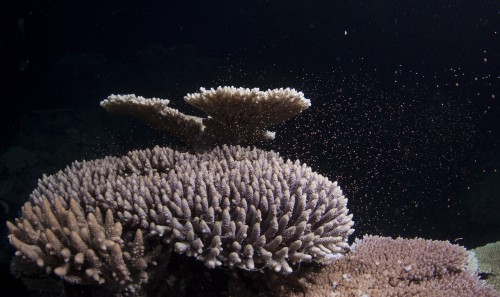Quicksilver Group News
November 25th, 2013Coral Spawning Phenomenon on the Great Barrier Reef
The ocean temperature was warm, and 4 nights after the full moon, when there was little tidal movement and the sun had set… Mother Nature’s conditions were just right for the annual phenomenon known as Coral Spawning on the Great Barrier Reef.
Coral spawning was unknown to science until 1982, when several marine biologists working on the Great Barrier Reef observed it in the wild for the first time.
Michael Healy, Quicksilver Group Director Sales and Marketing said; “We are finding the interest is increasing each year for our coral spawning night tours and our trips this year were fully booked over the 3 nights. Silverswift our luxury dive and snorkel catamaran travelled to Flynn Reef where certified divers experienced 2 fully guided night dives. We also offered a guided snorkel tour for experienced snorkellers.”
Quicksilver marine biologist, Russell Hore, explains that while corals have two reproductive methods, asexual where the individual polyps split and divide to increase overall size of the colony, to maintain a consistently robust gene pool corals need to have a sexual phase to exchange genes. This process is known as coral spawning.
“The majority of corals are hermaphrodites, which means they are both male and female at the same time. On the night of spawning, the polyps begin to expand out of their limestone cups and bundles of orange eggs can be observed. By synchronizing to reproduce at the same time, and putting most of their effort into a short period of the year, corals can maximize their reproductive effort. Everyone is aware of the day after coral spawning. There is usually an orange slick on the water that has a certain aroma, and all the plankton feeders have bulging stomachs from feasting on the leftover unfertilized eggs.”

